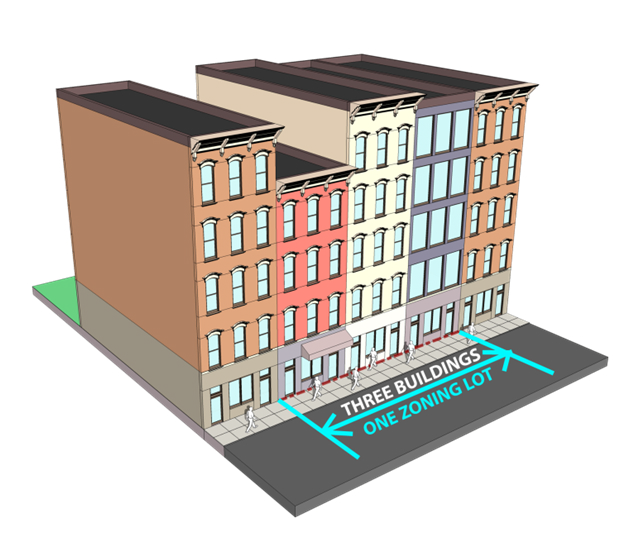Amendment redefines “development” and “building” and clarifies how the terms are used in order to reflect Planning’s intent. On February 2, 2011, the City Council approved the Department of City Planning’s Key Terms Text Amendment. Planning proposed the 700-page text amendment to ensure that existing regulations are interpreted and applied as originally intended under the zoning resolution. The amendment redefined the terms “development” and “building” and also included a host of modifications and clarifications designed to resolve conflicts and bring regulations into accordance with the Department of Buildings’ current practices.
The need for the text overhaul stemmed from a 2010 lower court decision ruling that the term “development,” as used in the zoning resolution’s curb cut regulations, only applied to newly constructed buildings and not existing buildings as argued by Planning. Planning addressed this ambiguity as part of the residential streetscape text change when it amended the curb cut prohibition so that it applied to all buildings rather than “developments.” 7 CityLand 55 (May 15, 2010).
resolution to determine if the term “development” was used as intended. The amended text clarifies that a development now only refers to a new building or the establishment of a new open non-accessory use. The amended text retains the term where a rule was intended to apply only to new buildings and replaces the term where the rule was intended to apply to new and existing buildings. It also replaces the term with “zoning lot” in regulations intended to apply to all buildings or uses on a zoning lot.
Because the definition of development would refer to a new “building,” Planning also reviewed the zoning resolution’s use of the term “building.” The zoning resolution had defined a building to include any structure bounded by zoning lot lines or open area. The result was that abutting structures on the same zoning lot which operated independently were considered a single building. This led to unintended outcomes when applying zoning regulations, such as the sliver law or the rule permitting commercial uses only below the lowest residential use in the same building within certain commercial districts.
To rectify these problems, Planning redefined a “building” to include any structure bounded by fire walls or open area, rather than zoning lot lines. This definition corresponds to the City’s building code and to what is commonly understood to differentiate buildings.
At the City Planning Commission’s public hearing, several of the private organizations that Planning enlisted to review the proposal, including the New York Chapter of the American Institute of Architects and the Real Estate Board of New York, registered their support. Both groups suggested that Planning monitor the changes for unintended results. The Real Estate Board also recommended that the changes not apply to projects that have filed plans with Buildings prior to the amendment’s effective date, which it believed should be set at a date later than Council’s approval.
The Commission modified and approved the amendment. Among the modifications, the Commission provided small- and medium-sized enlargements and alterations with a one-year extension of time to complete construction before the text changes applied.
The City Council approved the amendment on February 2, 2011.
Council: Key Terms Text Amendment (N 110090(A) ZRY – text amend.) (Feb. 2, 2011).


